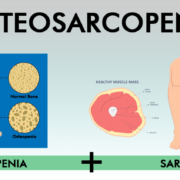How Fasting Impacts Your Mitochondria
The research scientist in the webinar focused on mitochondria and aging in his part of the presentation. He has helped research and develop a nutrient that appears to help with mitophagy, the process of removing and replenishing old mitochondria. The naturally produced chemical is called urolithin A. It’s produced naturally by the microbiome in response to eating foods such as fruit, especially pomegranate, and nuts. The problem is that we may or may not produce enough urolithin A, depending on the state of our microbiome. There has been decent research on the supplement, and I talked about the supplement in Aging with the Vengeance: Reclaiming Your Power.
What caught my attention was that intermittent fasting may also help with renewing and replenishing mitochondria. The problem becomes what kind of fasting are we talking about? Complete fasting? Eating during only a few hours per day? I’ll cover the two most popular forms.
Intermittent Fasting
Intermittent fasting is “in” right now. It is especially popular when combined with the Paleolithic or the ketogenic diet. What it essentially means is that you take in no calories by mouth for up to 20 hours per day, often called the 20:4 approach, and then you eat during that four-hour block of time. Research has shown that people lose weight, get better control of their prediabetes, and may even reduce some of the metrics related to cardiovascular disease such as blood pressure and cholesterol levels. But specific to mitochondria, the data are nowhere near as clear.
Fasting Mimicking Diet
I first encountered the fasting mimicking diet, or FMD for short, when I looked at the research of Valter Longo. He’s a scientist who has used periodic fasting with patients undergoing cancer treatment. For one to five days before treatment, they go on an FMD which drops down to 500 calories per day in some cases, and then they go back to their regular diet and go through their normal chemotherapy protocol. The critical factor is that he’s shown an improved quality of life as well as improved outcomes for people who used the FMD during treatment as opposed to those who ate their normal diet.
In research in mice, using FMD has demonstrated a reduction in symptoms of Alzheimer’s disease and dementia. Parkinson’s disease, obesity, type 2 diabetes, and others have also benefited from the FMD approach. Dr. Longo has created a commercial program that is available.
Why FMD? As near as I can gather, the concept utilizes the body’s protective mechanisms that allow energy to continue to be produced at a high enough rate to continue carrying on with life (such as searching for food in other eras) in the absence of food until food can be found. Research in athletes who’ve used FMD versus a normal diet has demonstrated maintenance of strength and endurance after going through a five-day FMD protocol while continuing to work out.
The Bottom Line
In my opinion, FMD makes sense. Fasting for two days and then going back to your normal diet for a couple of weeks just makes more sense than obsessing about when you can eat every day. But you may feel intermittent fasting’s a better way to go for your life, and that’s fine as well. One thing for sure is that I’m going to continue to follow this research.
The whole point to this is that restricting calories for long blocks of time stimulates the body to take good care of our mitochondria; that’s one battle that we have to win if we expect to age with a vengeance. And the great thing is that you can begin at any age.
What are you prepared to do today?









